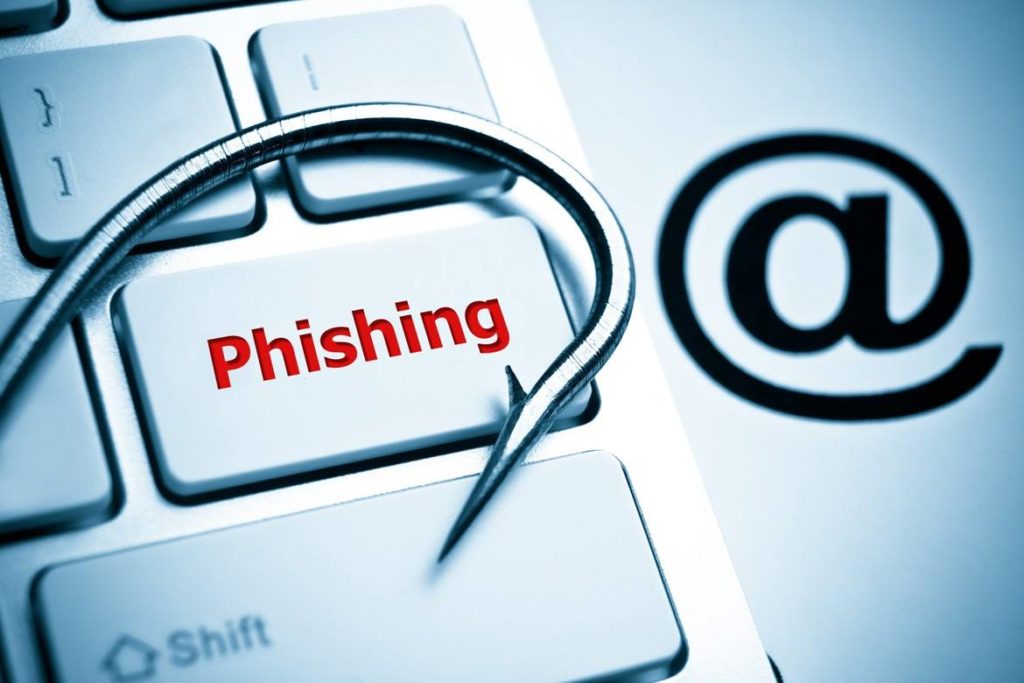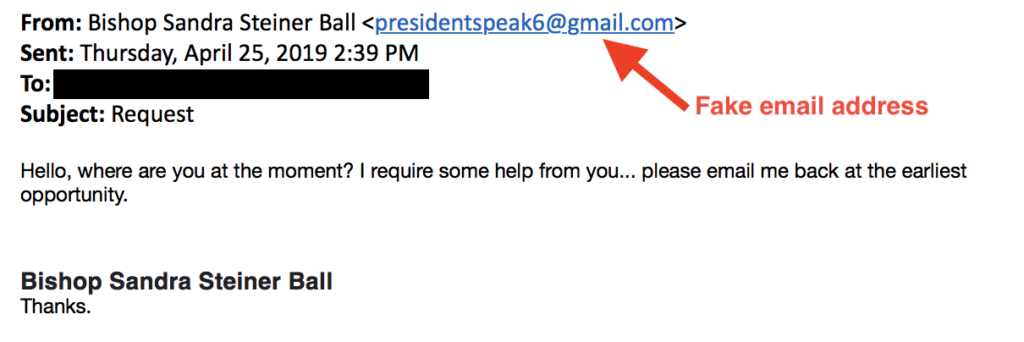
It has come to our attention that a “phishing” email attack has recently been sent out falsely claiming to come from Bishop Sandra Steiner Ball (and subsequently from other clergy and laity in the Conference).
“Phishing” emails can take several forms. Most often they are attempts to attack your computer or online identity by securing personal information about you.
Be suspicious if someone contacts you unexpectedly online and asks for your personal information.

The best way to identify if an email is fraudulent is to check the actual address attached to the name. In the case above, a false email address has been used alongside Bishop Steiner Ball’s name. You may have to hover your mouse over the name in the “From” line or click an arrow next to that name, depending on how you receive your email.
Below are descriptions of the primary types of phishing emails:

You can help protect yourself and our Conference against phishing attacks by taking the following steps:
- DO NOT CLICK ON ANY LINKS. If a suspicious email provides a link for you to click as a response to an inquiry or request, DO NOT click on it. This is the fastest way for phishing attacks to spread.
- DO NOT OPEN ANY ATTACHMENTS. If a suspicious email asks you to open an attachment (such as an image, PDF file, etc.) do not attempt to open it. This is often a gateway for installing malware or viruses on your computer.
- REPORT IT. If you have a Gmail address and receive a suspicious email from another Gmail address, you can report it to Gmail. Follow this link for instructions on how to avoid and report a phishing Gmail.
- EDUCATE YOURSELF. Learn how to identify and avoid phishing attacks. Follow this link for helpful information from the Federal Trade Commission.
Your security is important to us. If you have questions or concerns, please don’t hesitate to contact our Conference Communications staff at wvumc@wvumc.org.